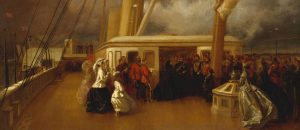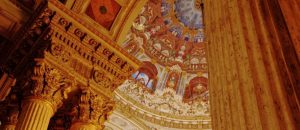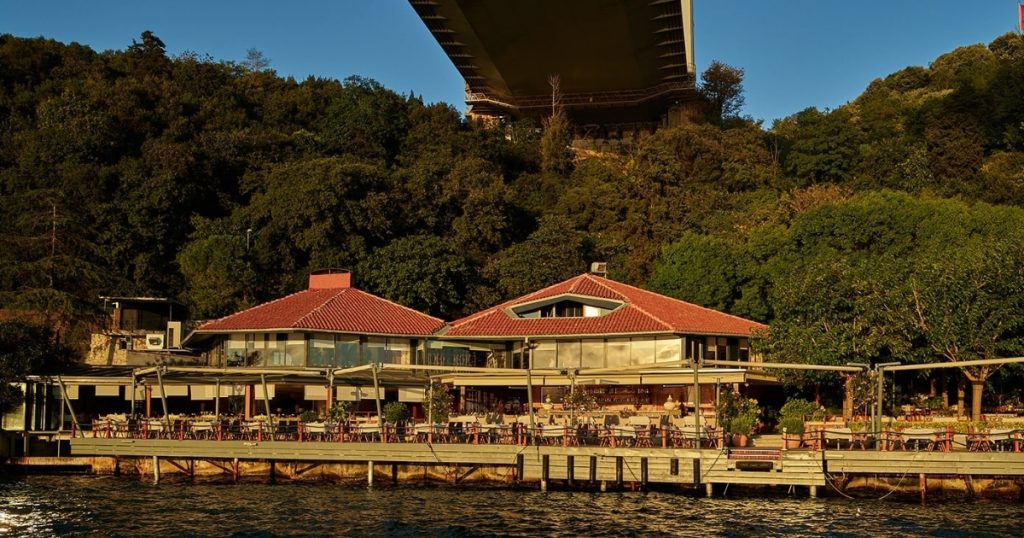The magnificent silhouette of Dolmabahçe Palace overlooking the Bosphorus is the carved-in-stone version of one of the 19th-century Ottoman Empire’s most ambitious transformation projects. Behind this monumental structure is a family that single-handedly reshaped the architectural identity of an empire: the Balyan family. They were not only masters who carved stone and marble but also strategists who translated the Sultan’s new Western-oriented vision into an architectural language. This article will deeply examine how the Balyan Family revolutionized Ottoman architecture with Dolmabahçe, destroying the traditional understanding of Topkapı Palace, and the artistic and political reasons behind this revolution.
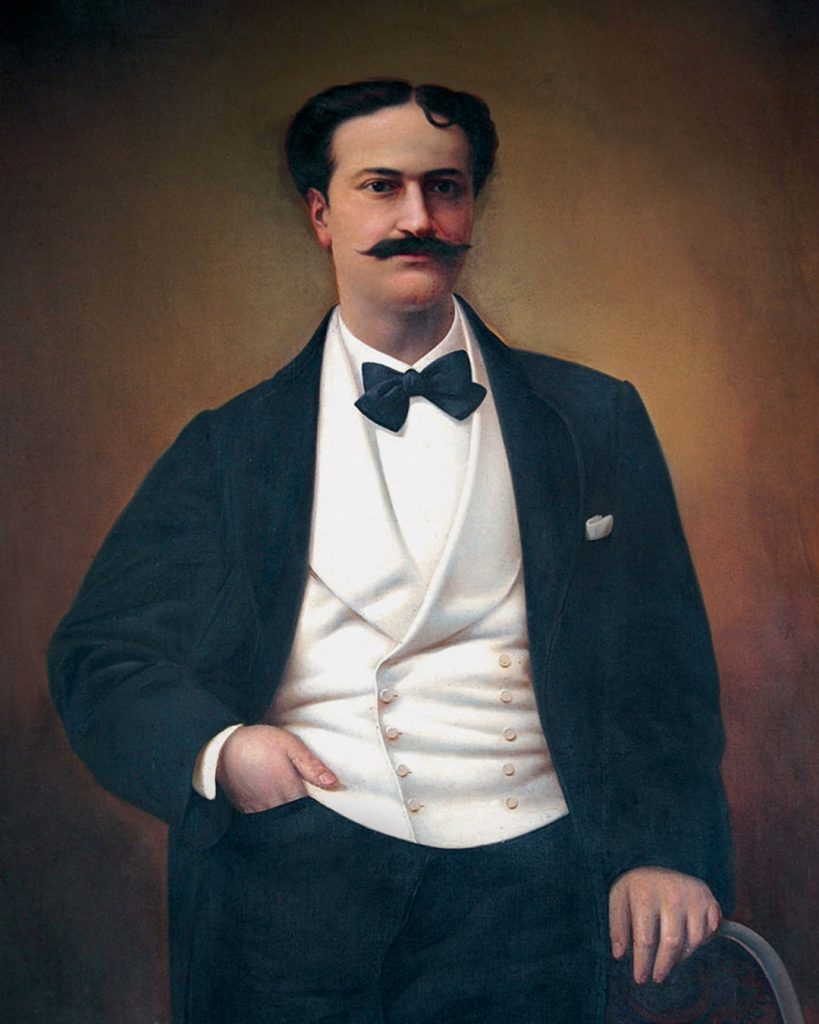
Who Are the Balyan Family?
The Balyan family is a dynasty of architects of Armenian origin who dominated court architecture for approximately a century during the final period of the Ottoman Empire. Serving as the Empire’s “Hassa Mimarları,” or chief architects, the family served many sultans. Among the most renowned members of this family are Garabet Amira Balyan and his sons Nigoğos Balyan and Sarkis Balyan, who led the design and construction of Dolmabahçe Palace. The family is known for their profound knowledge of Western architectural movements and their ability to combine them with Ottoman aesthetics.
The Balyans’ rise in court service parallels the Tanzimat Era, when the empire culturally and politically turned towards the West. During this period, sultans wished to be seen not just as rulers, but also as European monarchs. At this point, the Balyans became the most crucial actors who realized the sultans’ desire by transforming architecture into a tool for diplomacy and representation. Their works are the most tangible proof of the Ottoman Empire’s changing identity.
From Topkapı to Dolmabahçe: An Architectural Revolution
The Balyans’ greatest revolution was destroying the traditional and introverted pavilion structure of Topkapı Palace and proposing a Western model that rivaled European palaces, rising as a single monumental mass instead. Topkapı Palace, the product of a tradition centuries old, had an organic and labyrinthine structure consisting of scattered kiosks around interconnected courtyards. This structure reflected the empire’s nomadic origins and a more private style of governance. The Balyans, however, fundamentally changed this understanding with Dolmabahçe.
Dolmabahçe Palace, conversely, is a planned and symmetrical masterpiece that faces the world, especially Europe. Housing all administrative, ceremonial, and private living spaces within one large structure, it presents an image of a centralized and modern state. This transition was not just an aesthetic preference but also the architectural manifestation of a fundamental mental revolution. The Palace ceased to be a hidden center of power and became a stage where power was displayed.
The Archives Await
The story you’ve just read is a single thread in a rich historical tapestry. The Dolmabahçe Journal holds countless other narratives of art, power, and transformation waiting to be discovered.
READ MORE FROM THE JOURNAL →
From Traditional Pavilion Structure to Monumental Integrity
The design of Dolmabahçe Palace represents a holistic approach that gathers all functions under a single roof, unlike Topkapı’s structure consisting of independent pavilions. This “Gesamtkunstwerk,” or “total work of art” approach, is one of the most important principles the Balyans adopted from Western architecture. The Palace’s main sections, such as the Selamlık (official quarters), the Muayede Hall (ceremonial hall), and the Harem (private living area), are connected in continuous integrity.
This holistic structure not only provides practical convenience but also sends a powerful political message. While Topkapı’s dispersed structure suggested the existence of different power centers, Dolmabahçe’s monolithic mass symbolizes that all power is gathered in one center, in the person of the Sultan. This is an architectural manifestation of the ideal of establishing a modern and centralized state, which began with the Tanzimat Edict.
The Ottoman Synthesis of Western Styles
In the architecture of Dolmabahçe, the Balyans skillfully combined Western styles such as Baroque, Rococo, and Neoclassical with traditional Ottoman ornamentation art, creating a unique synthesis. This was not a simple copy of European architecture but a conscious reinterpretation. For example, while the columns and pediments on the Palace’s monumental facades carry Neoclassical gravity, the ceiling decorations and furniture in the interiors feature the curved and elegant lines of Rococo. The splendor of the Baroque style is especially evident in ceremonial spaces like the Muayede Hall.
However, the Balyans succeeded in integrating the Ottoman spirit into these Western forms. The vegetal motifs, cartouches, and ceiling murals (kalem işleri) used in the ornamentation are a modern interpretation of traditional Ottoman artistic taste. This eclectic, or selective, approach made Dolmabahçe a hybrid and unique structure that was both familiar to European ambassadors and felt like an Ottoman palace.
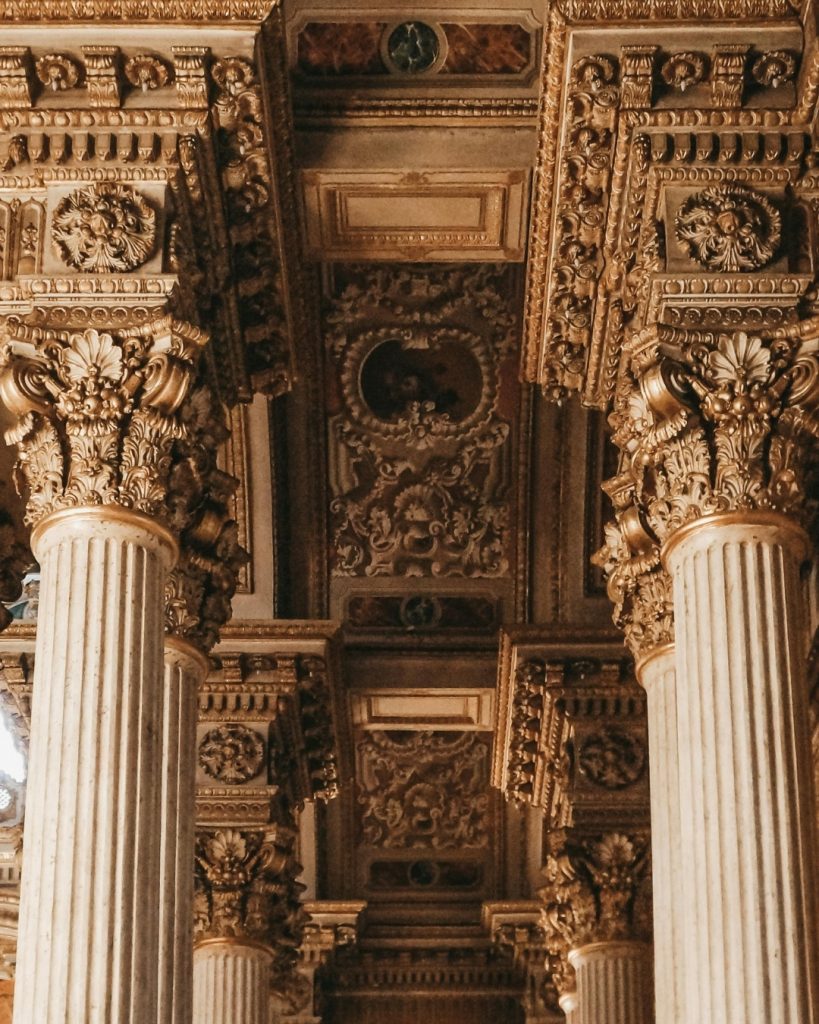
Explore the Architectural Symphony
Every column, every curve, and every gilded detail you’ve just encountered is part of a magnificent whole—a symphony in stone and marble designed to project power and redefine an empire. Discover the grand design behind the masterpiece.
EXPLORE THE GRAND DESIGN →
The Balyan Signature: Distinctive Features of Dolmabahçe Palace
The most distinguishing characteristics that define the Balyan signature in Dolmabahçe are the monumental facade design, the emphasis on symmetry, the magnificent staircases, and the eclectic ornamentation program combining Western and Eastern motifs. These elements constitute the fundamental building blocks of the family’s architectural identity.
- Monumental Gates and Facades: Gigantic entrances like the Saltanat Gate (Gate of the Sultanate) and the Hazine Gate (Treasury Gate) immediately convey a sense of power and authority. The flawless symmetry of the sea facade represents the empire’s new order and rational governance approach.
- The Muayede (Ceremonial) Hall: Located at the heart of the Palace and breathtaking with its 36-meter dome, this hall is a pinnacle of the Balyans’ engineering and aesthetic genius. The massive crystal chandelier, a gift from Queen Victoria, crowns the grandeur of this space.
- The Crystal Staircase: With its Baccarat crystal railings and magnificent design, the Crystal Staircase is the adaptation of one of the most luxurious elements of European palace architecture to Dolmabahçe, demonstrating the Balyans’ ambition to meet Western luxury standards.
- Interior Decorations: Gold leaf carvings on the ceilings, valuable parquet floors, Hereke carpets, and furniture imported from Europe prove that the Balyans designed not just a building, but a holistic living space with every detail considered.
A Family’s Legacy: The Balyans’ Influence on Ottoman Architecture
The Balyan family’s legacy was not limited to Dolmabahçe Palace; they left their mark on the final period of Ottoman architecture with many iconic structures, such as Çırağan and Beylerbeyi Palaces and the Ortaköy Mosque, which shaped the silhouette of the Bosphorus. These structures show that the Balyans developed a consistent architectural language that could be termed the “Imperial Style”. The Balyan family did not merely construct buildings but also imparted a new aesthetic identity to Istanbul.
Their works are a physical record of the complex relationship the empire forged with the West during its most turbulent period. Through architecture, the Balyans declared the Ottoman State’s desire for modernization, its power, and its ambition to the whole world. Therefore, when looking at Dolmabahçe Palace, we see not just a structure, but the new face of an empire shaped by the Balyan family’s genius.
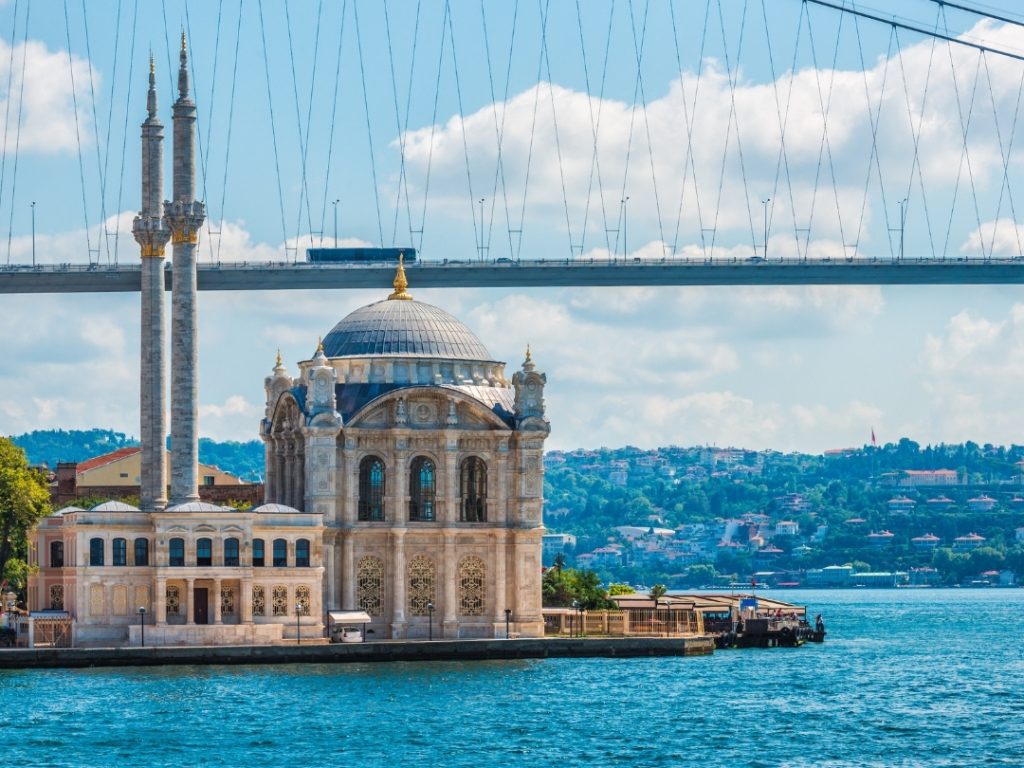
A Legacy in Stone
In conclusion, the Balyan family was much more than mere practitioners in 19th-century Ottoman architecture; they were the interpreters of a vision and the creators of a new aesthetic. Their construction of the monumental and Western structure of Dolmabahçe, replacing the traditional Topkapı model, was not just an architectural choice but the declaration of a profound civilizational change. The original language they created by synthesizing Baroque, Rococo, and Neoclassical styles with Ottoman motifs is still one of the most important elements defining Istanbul’s silhouette today. Thus, Dolmabahçe Palace is a stone manifestation of an empire bearing the Balyan Family signature.
Witness History’s Grand Stage
The stories are etched into these walls, history is embedded in the marble, and the splendor awaits your presence. Move from the screen to the stage. Step into the world you have just read about and experience the palace for yourself.
PLAN YOUR VISIT →









